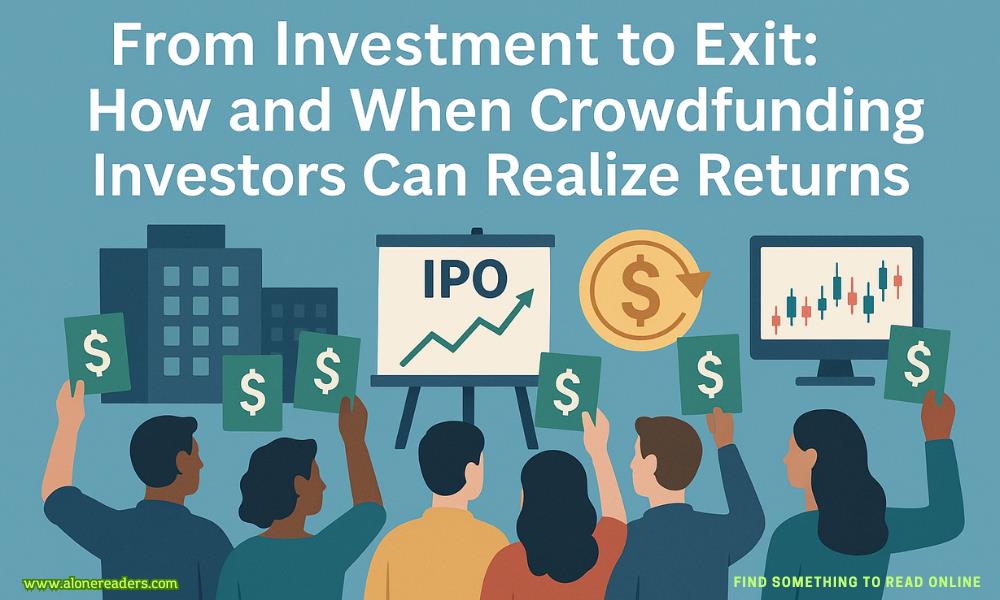
Crowdfunding has unlocked access to early-stage investments that were once exclusive to venture capitalists and private equity firms. But with access comes uncertainty—especially when it comes to exits. While startup founders may have clear roadmaps for growth, investors are often left wondering: When and how will I get my money back—and hopefully more? This article dives deep into the exit pathways available to crowdfunding investors, the expected timeline for each, and the realistic returns one might expect.
High-risk, long-horizon capital
Investments made through crowdfunding portals—particularly in early-stage equity deals—are inherently illiquid. Most startups don't generate meaningful revenue for the first few years, let alone profits. Investors should approach these investments expecting:
Equity crowdfunding typically offers preferred shares or SAFEs (Simple Agreements for Future Equity), which are tied to liquidity events, making exit strategy clarity crucial.
What it is:
Acquisition occurs when a larger company buys out the startup, often to gain technology, talent, or market share. This is the most common and likely exit for crowdfunded startups.
How investors benefit:
Investors receive a payout based on their shareholding, subject to liquidation preferences and terms of their agreement. For example, if a company is acquired for $50 million and you hold 0.2% equity, you could theoretically receive $100,000—minus any dilution and preferential payouts to early investors.
Timeframe:
3 to 7 years on average from the time of initial funding.
Key challenges:
What it is:
An IPO is when a company lists its shares on a public stock exchange. For investors, this unlocks full liquidity, as their shares become tradable.
How investors benefit:
Crowdfunding investors often benefit from substantial appreciation, particularly if they invested at seed-stage valuations. Post-IPO, investors can sell their shares at market price after the lock-up period (typically 6 months).
Timeframe:
7 to 10+ years. IPOs are rare in crowdfunding due to the intense regulatory, compliance, and performance requirements.
Key challenges:
What it is:
Revenue sharing is a structure in which investors receive a portion of a startup’s revenue until a multiple of their original investment is returned (e.g., 1.5x or 2x).
How investors benefit:
Rather than waiting for a big exit, they begin receiving payments once the company generates sufficient revenue. This model is typically used in consumer products, restaurants, and media ventures.
Timeframe:
Revenue payouts can begin within 12–36 months of the investment, depending on the business's growth trajectory.
Key challenges:
What it is:
Secondary markets allow investors to sell their equity in private startups to other investors before a traditional exit event.
How investors benefit:
These platforms (like StartEngine Secondary or Forge) provide partial liquidity for shares in startups that have shown traction but haven’t exited.
Timeframe:
Secondary transactions may be possible within 2–5 years if the startup meets certain conditions—like annual revenue minimums or valuation thresholds.
Key challenges:
1. Returns are often binary:
Most startups will fail or deliver modest returns. However, one breakout investment can return 10x, 50x, or even 100x the initial amount.
2. ROI varies widely:
The annualized internal rate of return (IRR) across startup investing can range from -100% to 40%+, depending on deal quality and portfolio diversification.
3. Patience is essential:
Exits rarely occur before 5 years. Serious investors often construct portfolios with 10+ startup investments, anticipating only a few winners.
4. Active involvement is rare:
Crowdfunding investors generally have no board seats or influence over company strategy, so they must trust founders to steer toward a liquidity event.
Capital gains tax treatment:
Upon a qualifying exit (acquisition or IPO), gains are usually subject to long-term capital gains tax if held for more than a year. In the U.S., Qualified Small Business Stock (QSBS) rules may exempt up to $10 million in gains under IRC Section 1202.
K-1s and revenue-sharing taxes:
In revenue-sharing models, investors may receive K-1 forms and be taxed on payments as income. Understanding how payouts are taxed helps with accurate forecasting of net ROI.
Transfer agent involvement:
In IPOs or secondary market sales, transfer agents may be involved to facilitate legal ownership transfers. Ensure that your equity is properly recorded during the initial investment to avoid complications later.
Final Thoughts
Crowdfunding investment is not a get-rich-quick vehicle—it’s a long game requiring strategic thinking, risk tolerance, and patience. While IPOs and acquisitions can yield significant returns, most outcomes fall short of investor expectations. The best approach combines diversification, due diligence, and a long-term mindset. If you understand the paths from investment to exit—and prepare for the reality rather than the dream—you can participate wisely in the democratization of startup investing.